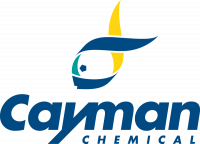Cookie preferences
This website uses cookies, which are necessary for the technical operation of the website and are always set. Other cookies, which increase the comfort when using this website, are used for direct advertising or to facilitate interaction with other websites and social networks, are only set with your consent.
Configuration
Technically required
These cookies are necessary for the basic functions of the shop.
"Allow all cookies" cookie
"Decline all cookies" cookie
CSRF token
Cookie preferences
Currency change
Customer-specific caching
FACT-Finder tracking
Individual prices
Selected shop
Session
Comfort functions
These cookies are used to make the shopping experience even more appealing, for example for the recognition of the visitor.
Note
Show the facebook fanpage in the right blod sidebar
Statistics & Tracking
Affiliate program
Conversion and usertracking via Google Tag Manager
Track device being used

If you have any questions, please use our Contact Form.
You can also order by e-mail: info@biomol.com
Larger quantity required? Request bulk
You can also order by e-mail: info@biomol.com
Larger quantity required? Request bulk
AP-1 is a miniaturized proteolysis-targeting chimera (PROTAC) that contains an anaplastic... more
Product information "AP-1"
AP-1 is a miniaturized proteolysis-targeting chimera (PROTAC) that contains an anaplastic lymphoma kinase (ALK) ligand connected to the E3 ubiquitin ligase ligand (±)-thalidomide (Cay-14610) by an ultrashort linker. It degrades the ALK fusion protein NPM-ALK in Karpas-299 cells, where it is highly expressed, when used at concentrations ranging from 10 to 300 nM, an effect that can be blocked by the proteasome inhibitor MG-132. It also degrades the ALK fusion protein EML4-ALK and ALK containing the phenylalanine-to-leucine substitution mutation at position 1174 (ALKF1174L) expressed in SN-N-SH and NCI H3122 cells, respectively. AP-1 is cytotoxic to ALK-dependent Karpas-299 cells (IC50 = 0.1265 nM) but not non-ALK-dependent THP-1 cells (IC50 = 2,704 nM). It reduces tumor volume in an NCI H3122 mouse xenograft model when administered at doses of 25, 50, and 100 mg/kg.Formal Name: 4-((2-(4-(4-((5-chloro-4-((2-(isopropylsulfonyl)phenyl)amino)pyrimidin-2-yl)amino)-3-methoxyphenyl)piperazin-1-yl)-2-oxoethyl)amino)-2-(2,6-dioxopiperidin-3-yl)isoindoline-1,3-dione. Molecular Formula: C39H40ClN9O8S. Formula Weight: 830.3. Purity: >95%. Formulation: (Request formulation change), A solid. Solubility: DMF: 30 mg/ml, DMSO: 30 mg/ml. SMILES: O=C(CNC1=C(C(N(C2C(NC(CC2)=O)=O)C3=O)=O)C3=CC=C1)N4CCN(C5=CC(OC)=C(NC6=NC(NC7=CC=CC=C7S(C(C)C)(=O)=O)=C(Cl)C=N6)C=C5)CC4. InChi Code: InChI=1S/C39H40ClN9O8S/c1-22(2)58(55,56)31-10-5-4-8-27(31)43-35-25(40)20-42-39(46-35)44-26-12-11-23(19-30(26)57-3)47-15-17-48(18-16-47)33(51)21-41-28-9-6-7-24-34(28)38(54)49(37(24)53)29-13-14-32(50)45-36(29)52/h4-12,19-20,22,29,41H,13-18,21H2,1-3H3,(H,45,50,52)(H2,42,43,44,46). InChi Key: MCCIEZLYIAJGSE-UHFFFAOYSA-N.
| Keywords: | 4-((2-(4-(4-((5-chloro-4-((2-(isopropylsulfonyl)phenyl)amino)pyrimidin-2-yl)amino)-3-methoxyphenyl)piperazin-1-yl)-2-oxoethyl)amino)-2-(2,6-dioxopiperidin-3-yl)isoindoline-1,3-dione |
| Supplier: | Cayman Chemical |
| Supplier-Nr: | 38875 |
Properties
| Application: | PROTAC, ALK (anaplastic lymphoma kinase) degradation |
| MW: | 830.3 D |
| Formula: | C39H40ClN9O8S |
| Purity: | >95% |
| Format: | Solid |
Database Information
| KEGG ID : | K05119 | Matching products |
Handling & Safety
| Storage: | -20°C |
| Shipping: | +20°C (International: -20°C) |
Caution
Our products are for laboratory research use only: Not for administration to humans!
Our products are for laboratory research use only: Not for administration to humans!
Information about the product reference will follow.
more
You will get a certificate here
Viewed

